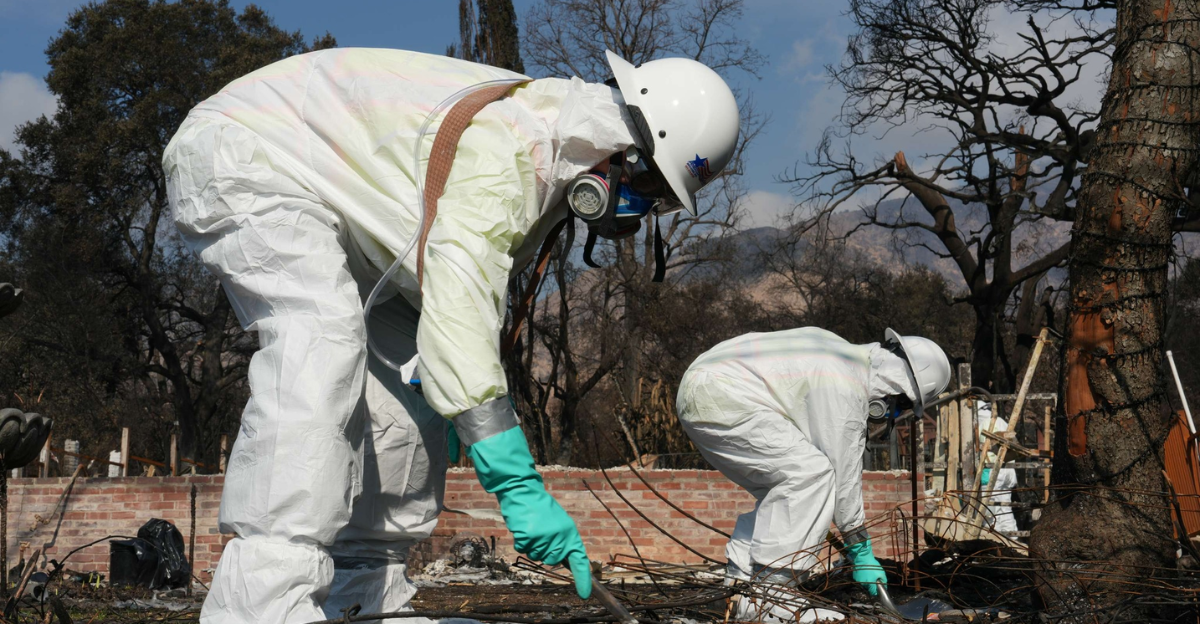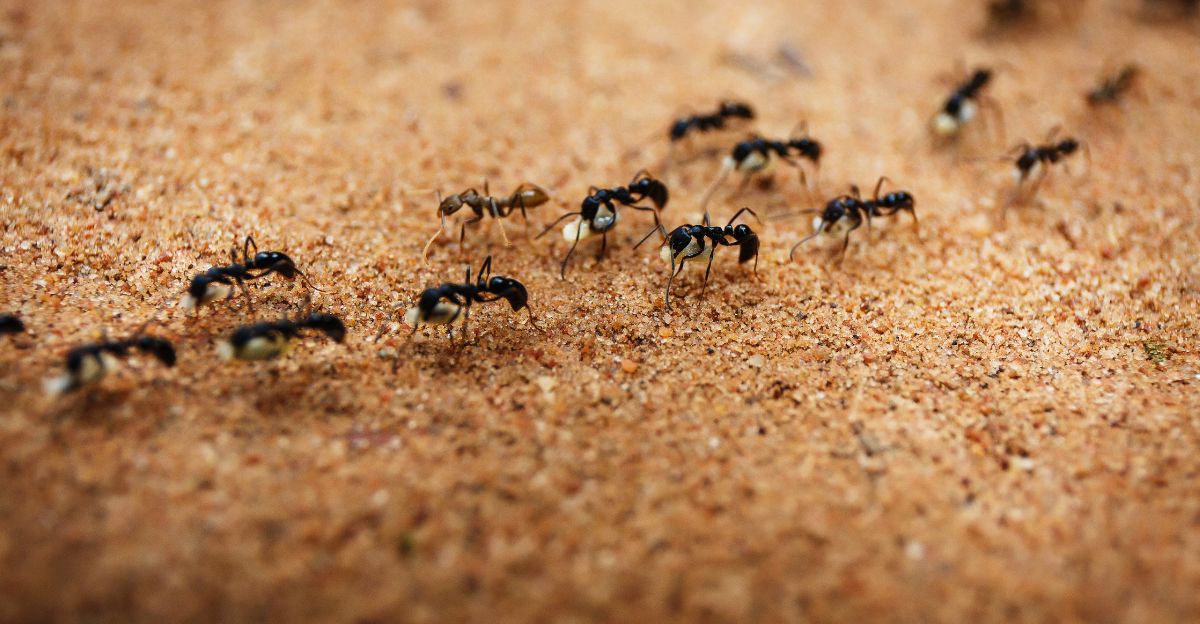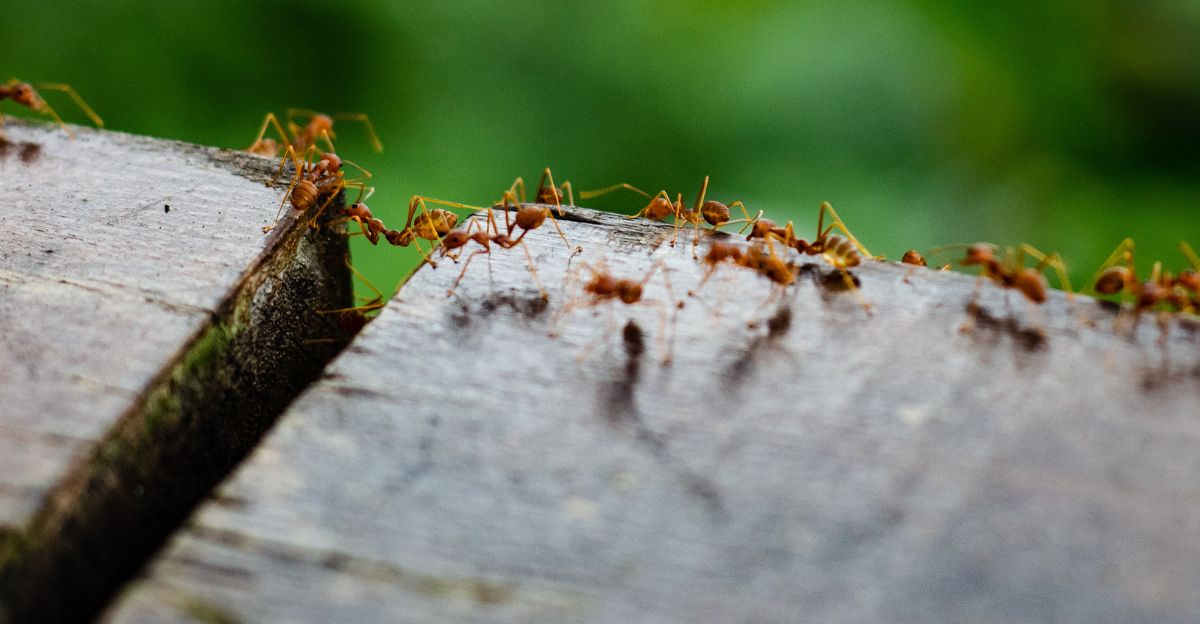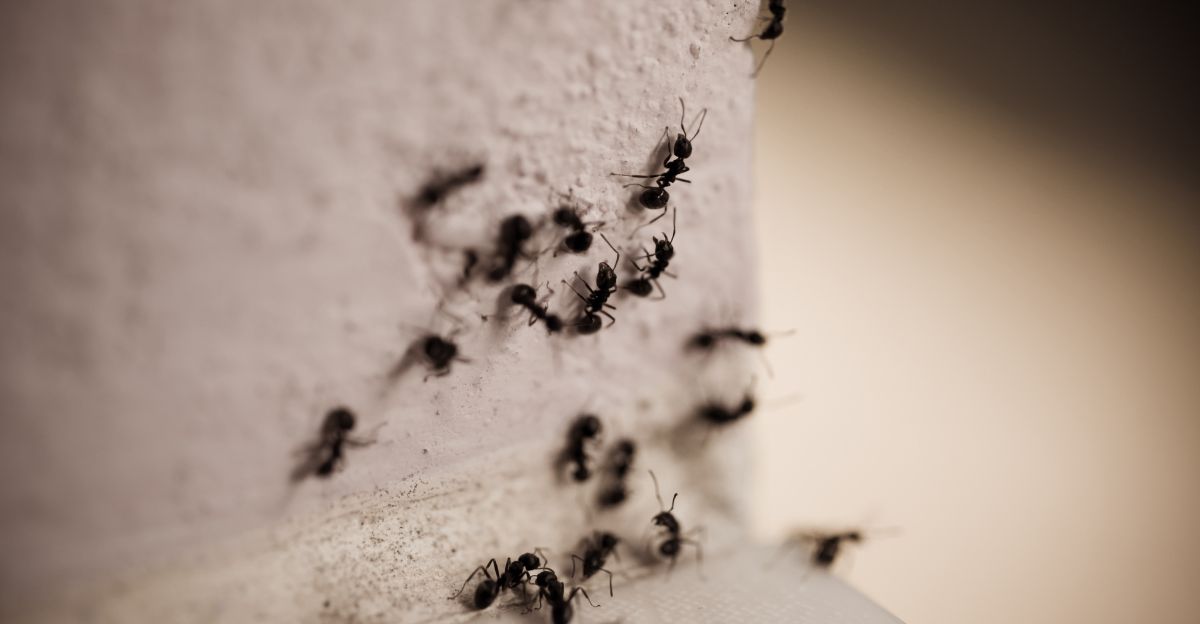
The Asian needle ant, scientifically known as Brachyponera chinensis, is an invasive ant species quickly spreading throughout the United States. Though tiny at only about 3/16th of an inch in size, this ant’s venomous sting has produced not only severe allergic reactions but also life-threatening anaphylactic shock.
First detected in Decatur, Georgia, in 1932, the species has expanded its range extensively. It is now known to inhabit at least 20 states from the Northeast to the Southeast and even as far as Texas and Washington.
Physical Characteristics and Identification

The ants are small, dark brown to black in color, with light orange-brown legs and antennae. Their bodies are shiny and measure about 0.2 inches in length. They have long, pointy jaws and a prominent stinger at the rear.
They can be challenging to identify since they look similar to other ants in the Eastern U.S., and you need an expert eye to verify confirmation. Unlike fire ants, Asian needle ants do not construct visible mounds or produce trails of foragers, which makes them harder to detect.
Habitat and Behavior

Asian needle ants like to live in moist, dark areas, such as leaf litter, dead logs, under rocks, and in oak trees. They tend to nest in hardwood habitats and form small colonies.
Their populations are at their highest levels in July and August. Although they have a venomous sting, these ants are less aggressive and generally will only sting when disturbed or threatened. Their sting may result in pain lasting for hours or days and recurring days later.
Health Risks and Allergic Reactions

The Asian needle ant’s venom is strong enough to induce anaphylaxis, a potentially life-threatening allergic reaction that results in tongue and throat swelling, difficulty breathing, low blood pressure, and rapid heartbeat.
Those allergic to the bites or stings of bees, wasps, or yellowjackets are especially vulnerable. Georgia reported at least three cases of severe anaphylactic reactions attributed to the ants, which sting victims multiple times. Experts say at-risk persons should carry an EpiPen just in case.
Spread Across the United States

Native to Georgia since the 1930s, the Asian needle ant has gradually spread along the East Coast from Connecticut down to Florida, and has also been detected in other states, including Texas, Washington, and Wisconsin. The increase in range of the ants represents new challenges for public health and ecological balance as the ants invade new territories.
Ecological Impact

In addition to posing health risks to humans, Asian needle ants are a threat to indigenous ant species, which perform vital functions in regional ecosystems. When introduced to new environments, they challenge native species and in doing so, destabilize the existing ecosystem – a disruption that can harm biodiversity and the overall health of the habitat. Their carnivorous diet and nesting habits are contributing to this ecological pressure.
What Homeowners Can Do to Prevent Them

To reduce the risks of Asian needle ant infestations, experts advise sealing entry points in homes, eliminating food sources, and reducing moisture around the property.
Storing food in airtight containers, repairing leaks, and clearing debris, leaf litter, and mulch from around the home will also help deter these ants from nesting nearby.
What to Do if You Find Asian Needle Ants

If you suspect Asian needle ants reside in or around your property, you should consult a professional pest control expert right away. Due to their small size and hidden nesting habits, professional identification and treatment are essential to effectively manage and eliminate infestations.
Expert Advice and Public Awareness

Entomologists emphasize the importance of the public knowing how the Asian needle ant looks and what its risks are. Dan Suiter, a professor of urban entomology at the University of Georgia, urges people, particularly those with known allergies, to learn to identify the ant and have quick access to emergency medication like an EpiPen. Preventative measures can be taken to avoid life-threatening allergic reactions and decrease human contact with these ants.
Vigilance and Preparedness

The Asian needle ant’s range expansion across several states represents a growing public health and ecological risk. They’re not as menacing as some invasive species, but their venomous stingers and stealthy habits make them a serious threat. Vigilance, prevention, and timely trained medical intervention are essential in managing their impact and protecting for public health.
Explore more of our trending stories and hit Follow to keep them coming to your feed!

Don’t miss out on more stories like this! Hit the Follow button at the top of this article to stay updated with the latest news. Share your thoughts in the comments—we’d love to hear from you!







